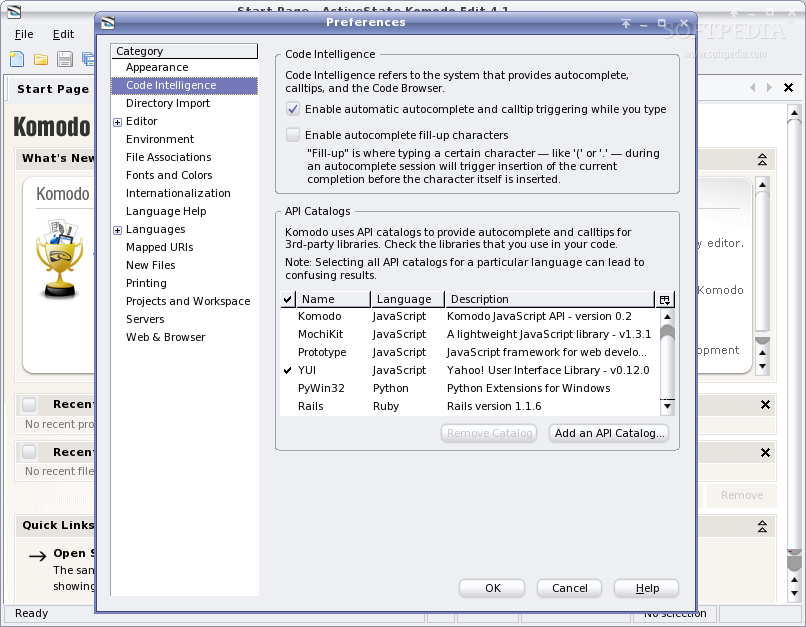

- #Komodo edit html boilerplate code#
- #Komodo edit html boilerplate download#
- #Komodo edit html boilerplate free#
One of the most popular (if not the most popular) boilerplate to help you build fast, robust, and adaptable web apps or sites, is HTML5 Boilerplate.
#Komodo edit html boilerplate code#
Recreate the code snippet in the Demo section by typing out the code in your index.html file or using the shortcut from the VS Code Tip section. The boilerplate gets by with only 400 lines and there’s no installation and zero compiling necessary to get started. You can view any of the HTML demos here to see the boilerplate HTML code in action. You should keep these meta elements in your code. The second is to help with displaying your webpage on smaller screens (smartphone screens, for example). The first is to help make your webpage compatible with older Microsoft browsers. Adds a focus mode to Komodo, easily toggling the main UI elements. Komodo Packages (previously called Resources) is where we collect community contributions to Komodo that allow you to customize Komodo in original ways. Written in JS, Python, C++ and based on the Mozilla platform.
#Komodo edit html boilerplate free#
When using this shortcut, you will generate 2 more meta elements in the head element. Komodo Edit is a fast and free multi-language code editor. You can generate all of the boilerplate code in VS Code by typing ! in an HTML file and pressing Tab or Enter. It contains all of the text and visual elements that you want to show in the browser, such as your headings, paragraphs, and links. The second element nested inside the html element is the body element. It’s always nested inside the head element. The title element controls what text is displayed in the browser tab when viewing the HTML file in the browser. Setting this ensures that the right characters are used when displaying your web page.

In this article, Ill share my version of the HTML5 boilerplate with you guys and explain the parts that are to it. A boilerplate is a quick copy-paste HTML document that is the bare minimum to get started. The tag that says tells the browser what character set your web page uses. Today I want to go back to the basics when we start our websites: the boilerplate template.

Metadata is information that’s associated with your HTML file that isn’t necessarily visible to the user (at least, not on the actual web page).

The head element generally contains all the metadata for your web page. The first element nested inside the html element is the head element. html elementĪfter the doctype, the rest of your HTML code is wrapped in an html element: DoctypeĪn HTML file always starts with the doctype: Īlthough you won’t interact with the doctype much, it’s still required to be at the top of the file. That’s because CodePen hides the boilerplate code from you, but it’s technically still there. Note: You’ll notice that you can’t see these tags in our CodePen demos. This standard HTML code is called boilerplate code. But if you’re not sure whether you need an IDE or just a powerful editor, you can start out with free Komodo Edit and maybe graduate up to IDE if you find you need advanced features such as debugging or source code control integration.With HTML files, there are some standard tags and elements that show up on every page and are required to be there. If you already know you need a full-fledged IDE, choosing between Komodo IDE and competitor JetBrains PhpStorm is a tough call. Komodo Edit also features other amenities, such as code folding and simple text zooming using the mouse wheel. I compared it with jEdit, editing a simple snippet of CSS, and it fared significantly better jEdit’s auto-completion stopped working after a few attempts. Komodo’s auto-completion feature is excellent, similar to the one found in Microsoft Visual Studio: You get a scrollable menu with completion options, rather than having to blindly tab between options. For example, the Find feature works just like the one found in recent Firefox versions, with live search and a bar along the bottom of the window. If Firefox is your browser of choice, you would feel right at home with Komodo.
#Komodo edit html boilerplate download#
Its built-in FTP client lets you access remotely hosted files without having to create a project or download an entire directory tree. On a day-to-day basis, working with Komodo Edit is a pleasant experience. Too bad this wasn’t mentioned in the application or documentation, though it is in the marketing materials. I later discovered I could have simply dragged the file and dropped it over the Komodo icon. This editor is extremely powerful, but is not quite as intimidating as some of the older. I ended up locating an obscure folder containing all other schemes and putting the file there to make Komodo Edit recognize it. Komodo Edit is a great text editor for HTML5 and CSS3 programming. The scheme selection dialog didn’t provide any hints, nor did the online help system. Once I had the scheme file on disk, installing it proved trickier.


 0 kommentar(er)
0 kommentar(er)
